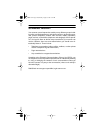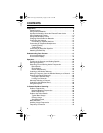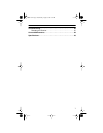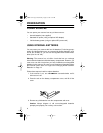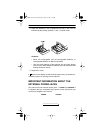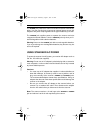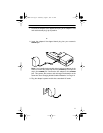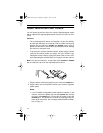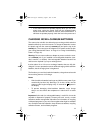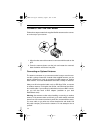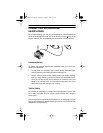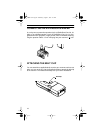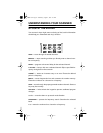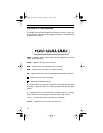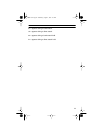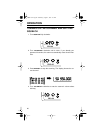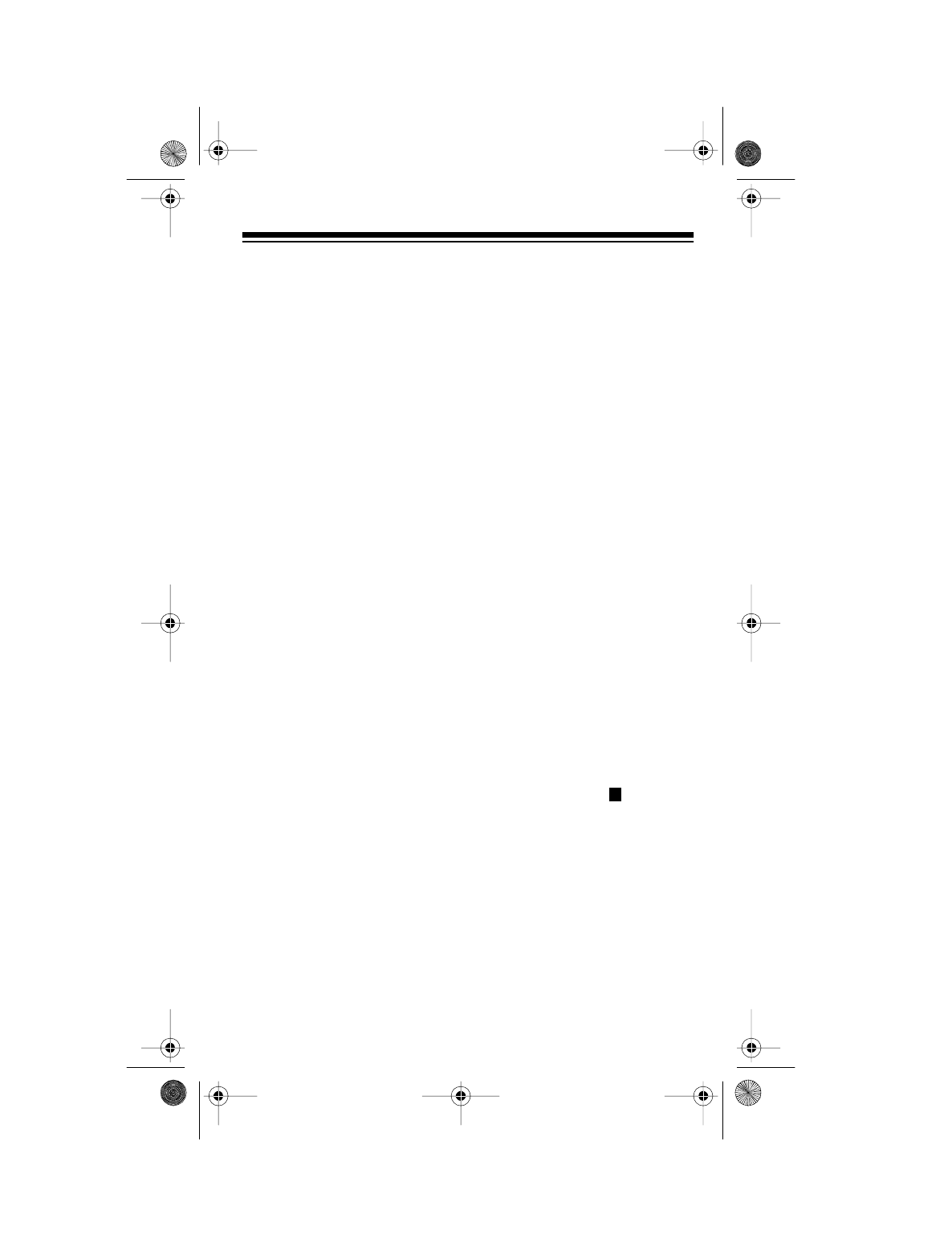
13
• If the scanner does not operate properly when you use a DC
power cord, unplug the power cord from the cigarette lighter
socket and clean the socket to remove ashes and debris. If it
still does not operate properly, check the fuse in the power cord.
CHARGING NICKEL-CADMIUM BATTERIES
The scanner has a built-in circuit that lets you recharge nickel-cadmium
batteries while they are in the scanner. To charge the batteries, remove
the plastic cap from the scanner’s
CHARGE
jack and put the cap in the
POWER
jack. Then connect an AC adapter or DC power cord to the jack
(see “Using Standard AC Power” on Page 10 or “Using Vehicle Battery
Power” on Page 12).
Warning:
Do not connect either an adapter or power cord to the scan-
ner’s
CHARGE
jack if you installed non-rechargeable batteries (stan-
dard, extra-life, or alkaline). Non-rechargeable batteries become hot
and can even explode if you try to recharge them.
It takes about 10 to 18 hours to recharge batteries that are fully dis-
charged. You can operate the scanner while recharging nickel-cadmium
batteries, but the charging time is lengthened.
The first time you use nickel-cadmium batteries, charge them at least 24
hours to bring them to a full charge.
Notes:
• Nickel-cadmium batteries last longer and deliver more power if you
occasionally let them fully discharge. To do this, simply use the
scanner until it begins beeping every 15 seconds or appears in
the display.
• To prevent damaging nickel-cadmium batteries, never charge
them in an area where the temperature is above 90°F or below
40°F.
Important:
At the end of a rechargeable battery’s useful life, it must be
recycled or disposed of properly. Contact your local, county, or state
hazardous waste management authorities for information on recycling
or disposal programs in your area. Some options that might be available
are: municipal curb-side collection, drop-off boxes at retailers, recycling
collection centers, and mail-back programs.
B
20-511.fm Page 13 Wednesday, August 4, 1999 2:13 PM



